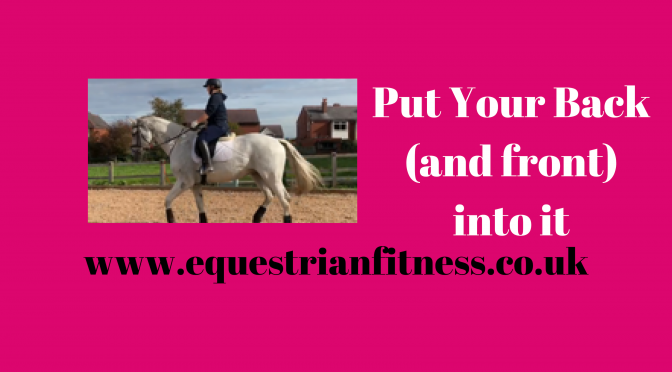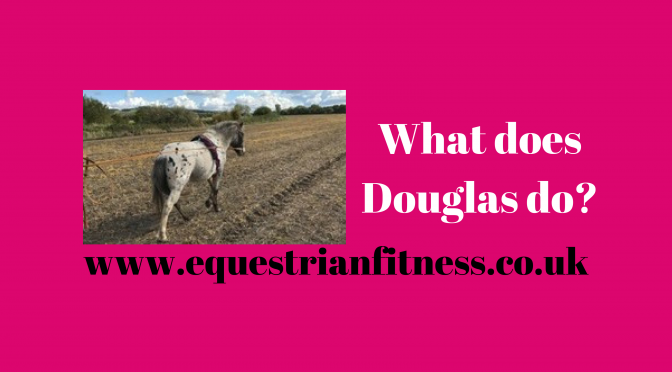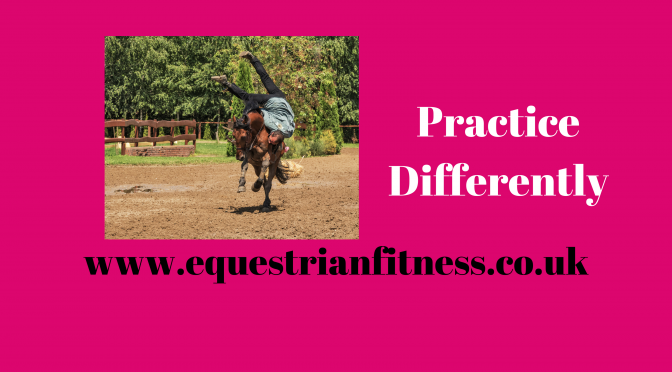I spent the weekend teaching some of my magic to several riders and all of them very different.
However one thing that united them was how terrible they thought they were! Hand on heart not one of them couldn’t ride, in fact they all rode really well but I think we increasingly compare ourselves to other people. Not just on social media but also others on our yard and most ridiculously to the Professionals. You know who doesn’t ride like Charlotte? Everyone else who isn’t Charlotte! The thing is we are all doing the best we can with the skills and information we have at this time. Great riders aren’t necessarily born great, yes some may be naturally gifted than others but I can guarantee that a lot of hard graft and training went on over the years to make them the way that are now.
I don’t think there is anything wrong with using other peoples’ success as a catalyst to improve your own performance but if this constant comparison is making you feel negative towards your own riding it’s time to turn it around.
I know a lot of it comes from wanting to do the best for your horse. We think that if we aren’t riding perfection and out competing at a high level our horse will not be happy. Now of course if you’re constantly jabbing on his mouth and bouncing on his back without a care for his comfort then you might want to address that but most riders I see aren’t doing those things-and you’re reading this so you are trying to improve.
I honestly don’t believe most horses care if they go competing every weekend or not. Of course some horses are of the nature they need to be kept busy, but most are quite happy being fed, grazing in a field and doing the odd bit of work in between cuddles with you. They also don’t really have a concept of the difference between Burghley and your local fun one day event. Yes the jumps are bigger but either way your horse had a fun day out, the height of fences is usually irrelevant-if he likes to jump big he’ll just jump big over the little ones anyway!
We also do not all have the same goals. If you’re goal is to do a bit of hacking and the odd clinic then what you do with your horse will be different to someone who is aiming for Badminton.
We are all at different points on our journey. This can be a tough one I think because the point on your journey does not necessarily correlate to the length of time you have been riding. We all have different things going on from our own and horses health, work, family, finances etc. that there is no comparison to how you are doing compared to the girl in the next stable. If you have a very busy job, husband, 3 kids and a tight budget, comparing yourself to the single, 9-5, high disposable income girl next door is doing yourself a disservice. Or if your horse has been on and off lame for 6 months comparing his progress to your friends’ horse that has barely had a scratch all year is unfair.
The thing that it really boils down to is why does it make you feel bad? Is it because you really want to be doing what that person is doing or is it because you think you should be doing it? These are two very different things and I have definitely done work on analysing this mind set myself.
If it because you think you should be at the competitions, or you should be working towards Travers and Half Pass but really deep down you’re happy with the odd local show and mastering an acceptable leg yield then you need to make peace with your own aspirations. There is nothing wrong with having seemingly smaller goals than other people. Your riding is your hobby, your bit of peace and head space and something you do for love; not another thing you need to over achieve at to impress other people.
However if the reason it makes you feel bad is because you do want to be achieving those things ask yourself what it would take to achieve it. What really goes on in the world of that girl on Social Media who is out winning competitions every weekend? I imagine she rides her horse 4-5 + times per week, has at least one if not more lessons per week, and maybe she also has her trainer rider her horse too. These are the things that have made her as good a rider as she is. She then of course also gives up those weekends to go to the competitions or uses work holidays to compete mid-week etc. Do you really want to do that? Do have the time and resources to do that? If you do and you really want it stop being envious and crack on with it! Get those lessons booked; make sure you’re riding consistently etc. If you’ve just read that and thought “phew that sounds like a lot of work I don’t want to do” accept that and be at peace with your decision that perhaps that isn’t actually your goal after all.
The most important thing to remember is “The Joy is in the Journey and not the Destination.”
I have asked more than one friend this question “what would you do if tomorrow everything clicked into place for you and your horse and you rode perfectly and won those competitions? What would you do then?” The answer every time…………………………..”Well I’d get another horse and start the process again!” So, we clearly don’t do it for the big wins, we do it for the feeling a continued little progress and picking ourselves up no matter how many times we get knocked down and the big wins are just the icing on the cake-that and I think we’ve clearly proven that all Equestrians are bonkers!!
So before you go comparing yourself to others and feeling yourself come up short, ask yourself if you really want what they have, the day in day out behind the scenes what they have. If you don’t stop comparing yourself unfavourably, and if you do; go out there and make it happen!










